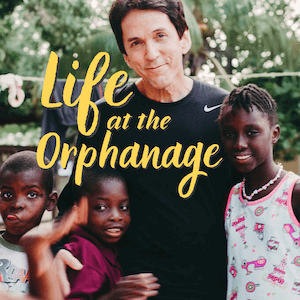When we were kids, we hid in trees. We jammed long pieces of plywood between sturdy branches, and hung blankets to cover the holes. This was our tree house. This was our club. The most important feature was the door.
Because we could keep it closed.
“Who is it?” we would yell.
“It’s Paul,” the local geek would answer.
“Go away, no geeks allowed! Hawwhaha!”
As we grew, we left the trees behind, but not the attitude. Today, some of us still belong to clubs that close doors. Sometimes these doors are shut reluctantly, and sometimes they’re shut with delight.
The result is still the same; someone gets closed out. And it hurts.
The issue last week wasn’t whether an auto executive named Roy Roberts was refused admission to Bloomfield Hills Country Club because he was black. You can argue that one up and down the highway. One side will tell you it’s obvious, they’re racist, why else would a predominantly white club reject a black man? The other side will say wait a minute, isn’t the mark of a integrated society that a man can also be denied things without regard to his skin color?
And both sides would be missing the point. The real question is: Why do we still have private clubs at all? For all our talk about democracy, equal treatment, and political correctness, many of us, it seems, still want to determine who’s coming to the dance and who they’re bringing.
And we want to be able to say “stay out.” The nature of clubs
The Bloomfield Hills incident was hardly the first involving country clubs. Four years ago, Shoal Creek in Alabama made international headlines when its lack of a black member threatened a TV boycott of the PGA Championship. Two years ago, five females sued Oakland Hills because they were denied working in the all-male dining area.
Jews, Asians and other minorities have for years been refused by most country clubs. And while Michigan now has a law banning gender discrimination, some places still don’t allow women to tee off during certain times.
So to complain that clubs are exclusionary is to be redundant. That’s what a club is. Keep some in, others out. The first line of crossing is money. If you don’t have the $15,000 to $50,000 to join, you’re not even considered.
Then, if you have the money, you must know members who are willing to
“sponsor” you. Already you can see the little power game forming. If you cozy up to the right people, and treat them nicely enough, they might sponsor your application. Then, if they cozy up to the right people, and treat them nicely enough, your application may be approved.
In most of the fancy places — Oakland Hills is no exception — the membership process is secret. No one knows who is on the committee. No one knows what criteria is used. At Augusta National, home of the Masters, to even suggest that you’d like to become a member is considered crass enough to keep you from ever becoming one. Membership is a secret honor bestowed only upon the most worthy.
God. I’m getting nauseous. Judging prospective members
What baffles me is why anyone would put themselves through this membership process. Why would you want your personality examined? Why would you endure even five minutes of other people judging how worthy you were to eat and play with them? And you pay to join?
Why? Is it because the club has members with whom you desperately want to associate? In that case, you are hopping into a clique, and you deserve whatever petty rules they live by.
Or is it simply about playing golf? In that case, may I suggest an alternative hobby? Bowling. It’s open to the public.
And a lot cheaper.
Ironically, according to several members at Bloomfield Hills, the reason Roberts’ application was rejected was because he was perceived as too
“corporately aggressive” — a stereotype that, a few years ago, would have been considered far more white than black.
Meanwhile, his rejection was front-page news in our papers, while reports of a black NFL coach calling his quarterback “a white motherf—–” were buried in the sports sections. Many asked why America is so quick to bite on any morsel of white-to-black racism, but willing to overlook it in reverse?
The truth is, all of it is part of a larger problem: an “us” and “them” attitude. We still draw lines in this country. Not just skin color. Age. Religion. Education. Politics. Wealth. Attitude. We see people as “our kind” or “the other kind.” We see them as “trustworthy” or “a threat.” We see them as “want to be with” or “don’t want to be with.”
And as long as we do, we’re still up in that tree house, listening for the knock and waiting to pass judgment.





0 Comments